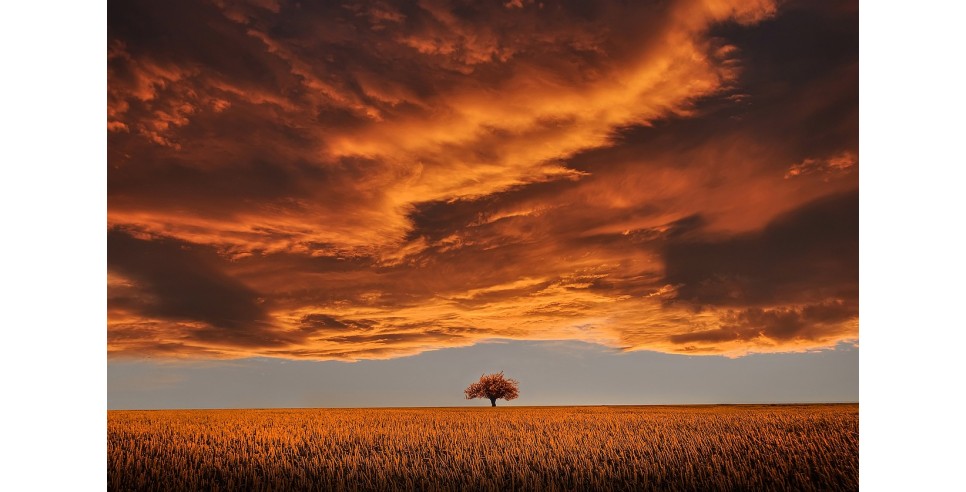
It has been dubbed the “ultimate recession” – much worse than the Great Recession of 2008-2009. Worse even than the Great Depression of the 1930s. And it may happen much sooner than you think.
In the economic depression of the 1930s, food prices actually declined in many developed countries because mechanization was rapidly improving farm productivity. Unemployment was high (25 percent in the U.S.), but widespread hunger was not a major problem.
Global warming, on the other hand, poses a deep threat to our very survival. If the current trend continues, it will cause ever-increasing mischief to our agricultural systems. The disappearance of mountain glaciers and winter snow packs, a process already well underway, will drastically reduce vital river runoff and with it the water resources that two-thirds of the human species depends on for farming and other needs. Heat waves will also decimate livestock and our crops. For instance, the months-long heat wave in western Russia in 2010 destroyed 40% of that country’s grain crops and led to a temporary tripling of world grain prices. The Arab Spring and the Syrian civil war have also been linked to local droughts. Several European countries also experienced crop losses from the prolonged drought and heat wave in the summer of 2018.
Our commercial food crops are also very fragile. One study by an international research institute found that for every degree Celsius above the nominal average growing temperature there is a 10% decline in the yields of wheat, rice, and corn. Another study, in India, found that a 2-degree Celsius increase reduced wheat yields in different locations by 37-58%. Especially troubling is the recent discovery that increasing atmospheric CO2levels reduces the nutritional value of rice, the main staple food for 2 billion people. More frequent and destructive droughts, storms, and wild fires – a trend already well advanced -- will also disrupt food production in many ways and cause many trillions of dollars in damage over time. Ocean warming and acidification (not to mention the effects of pollution) will severely harm the ocean food chain and threaten what is now about 17% of the protein supply for humankind, according to the U.N.’s Food and Agriculture Organization. Most of the world’s fisheries have already maxed out and some are in steep decline.
We are also running a serious deficit in the rate of water consumption. Most disturbing is the rapid draw-down of underground aquifers around the world. Some of them can be recharged over time, but many others cannot. According to a 2005 U.N. study, at least 15 major countries with half the world’s population – including the U.S., China, India, Pakistan, Iran, Mexico and several Middle Eastern countries – are running large water deficits and their water tables are rapidly declining. A more recent NASA study, using satellite data, indicated that 21 of the world’s 37 largest aquifers are seriously depleted. For instance, the huge Ogallala aquifer that spans portions of eight states in the American southwest and provides irrigation water for some 27% of U.S agricultural production, may be drained by 2028, according to a recent estimate. Even more alarming, a new government report in India concluded that 600 million of its people even now face extreme water scarcity, with 200,000 dying each year from unsafe or insufficient water. By 2030, the report estimated that the country’s total demand will be twice the available supply.
It is becoming ever-more likely that we will eventually (and maybe much sooner) experience a tectonic shift in the economics of food production and access to fresh water as the combination of climate disruption and resource depletion begins to wreak havoc. As we learned in Economics 101, scarcity tends to drive up prices until there is a new “equilibrium” point where the demand and supply curves intersect. In this case, though, we’re not talking about the price of “widgets” but about commodities that have life and death consequences. Economic inflation is how the middle class becomes poor and how the poor starve to death.
This, in a nutshell, is the looming crisis that we will soon be facing in our global agricultural system – scarcities and skyrocketing prices for essentials like food, water, and electrical power. The number of hungry and thirsty people around the world will increase rapidly as the cost of purchasing food and water rises in multiples from the present levels. And we will also very likely see many more examples of what is currently happening in Venezuela (as elsewhere historically) – hyperinflation that makes food unaffordable for a large swath of the population. The risk of mass-hunger and serious social conflict in many countries is very high. (In the U.S., for instance, a 2017 survey found that less than half of the population has even $1,000 saved up for emergencies and 39% have nothing at all.)
Needless to say, this will also have a devastating effect on the demand for other goods and services in our capitalist economic markets, as well as undermining corporate income and profits, and, of course, stock prices. Nor is this the kind of economic recession that can be countered with the traditional Keynesian financial tools, lowering interest rates, ramping up infrastructure spending, increasing welfare “safety net” spending, and the like. It is a crisis that will threaten the capitalist system itself.
What is to be done? If capitalist markets cannot provide a solution that avoids mass starvation, the only available alternative will be collective, cooperative action on a global scale oriented to the ancient principle of the “common good.” We must use the kind of economic and social tools that were deployed by the Allies to fight World War Two, including especially a universal “basic needs guarantee” and a global fair society. A detailed “prescription” for this cooperative strategy can be found in my forthcoming new book, LAST CHANCE! Species in Peril… Which Future Will We Choose? It will do nothing for stock portfolios, but it may enable us to feed, and perhaps save the world.









